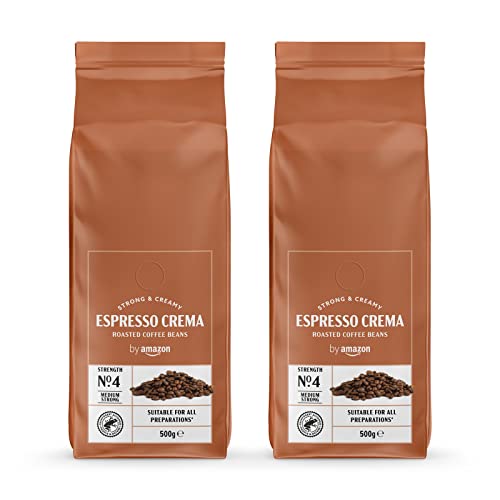What Are Coffee Beans?
Coffee beans are the seeds of a berry-like plant or fruit. They thrive best at altitudes and climates similar to the ones in which they are planted. They also require specific quantities and compositions of soil, moisture and other factors.
They're not just delicious however, they also offer numerous health benefits. Coffee is rich in amino acids trigonelline, which when roasted transforms into nicotinic Acid (a water-soluble B vitamin). It also has a high content of the phenolic acids such as chlorogenic acids, which help to lower blood sugar levels.
Origin
Everyone knows what a roasted coffee bean looks like, but few people know that it begins as the fruit. A coffee bean is actually a seed that comes from the fruit of some species of Coffea plants. In the majority of cases, the berries split and each one has two beans. In the case of about 5% all harvested beans only one bean splits. This kind of bean is known as"peaberry" and is also known as a "peaberry" and is typically hand-sorted and sold separately.
The "Bean Belt", an area of the world that lies between the Tropics of Capricorn & Cancer is where the bulk of coffee is produced. The majority of countries produce coffee using a variety of techniques, each of which has its own distinct flavor character and taste.

It isn't known the origin of coffee, however it is generally believed that the first coffee plants grew in Abyssinia (now Ethiopia). The most well-known story is about a goatherd referred to as Kaldi who spotted his goats screaming and excited after eating the bright red berries on nearby trees. Kaldi tried the berries and felt an exhilaration feeling for himself. Then he introduced the drink to other people in his community and it gained popularity. In the 15th and 16th century, it became popular throughout the Islamic world, despite the fact that Islamic authorities declared it to be intoxicating. an.
Flavor
The taste of coffee beans depends on the location and species of coffee plant, but also on the soil elevation, farming methods and roasting method. You can create different flavors by adjusting the temperature and duration of roasting as well as the air flow during roasting.
500g coffee beans of syrup used to flavor coffee beans can influence the taste. After roasting, the beans are coated with oil-based flavoring ingredients and then left to rest for 30 minutes. This allows beans to absorb oils. The coffee beans that are flavored are then graded and sorted.
The addition of flavor to coffee beans allows you to customize the taste without altering the texture or color. The flavor of the beans that are flavored is typically stronger than regular coffee. This is because the coffee beans with flavor are soaked with flavoring syrup.
The flavor of coffee can also be affected by the various whole spices added to it during storage. Mixing whole spices such as cinnamon sticks, vanilla and cocoa bean with freshly coffee beans will give them a distinctive flavor. This is particularly effective when the beans are stored in a airtight container.
Health Benefits
Coffee beans aren't just a great energy source for the body, they have also been associated with many health benefits. These benefits include reducing the risk of developing Alzheimer's disease the liver disease and Parkinson's disease. Coffee beans are rich in caffeine. It is known to improve memory and cognitive performance. Coffee contains antioxidants that fight free radicals. The chlorogenic acid in coffee is believed to be a key ingredient in preventing chronic diseases such as heart diseases and diabetes.
Consuming coffee beans has been associated with lower chance of developing type 2 diabetes. Research has also found that it can reduce the risk of Parkinson's disease, liver disease and cancers of the colon and the colorectal tract. Coffee has been linked to improved brain function and could help to prevent depression. According to several studies, the presence of certain acids in coffee can boost levels of dopamine and serotonin.
Although eating raw coffee beans is a healthy option for a lot of people but it shouldn't be utilized to replace a healthy diet and regular exercise. The caffeine effect is not to be over-exercised since it can trigger jitters, anxiety, and insomnia. If you suffer from acid reflux or a sensitive stomach, you should avoid coffee beans.
Preparation
The coffee plant produces two seeds (or beans) that are laid on top of each other. Each fruit has an outer layer known as the exocarp. It also has the pulp is a thin layer on the top. Before roasting, the coffee seeds are removed, sorted and cleaned. They can be processed using three different processes including dry, wet and a hybrid process known as the wet-processed natural. The beans are then cooked and after that they are then ground or whole.
Variety of coffee bean varieties provide a variety of flavor profiles to enhance a variety of drinks dessert, food, and recipes. The choice of coffee bean for an individual recipe will depend on the desired taste and texture.
When the coffee bean is in its entirety, it has an intact wax layer that protects its aroma and flavor compounds from air. After grinding,, these compounds are exposed to the air and begin to lose their flavor over time. When you make coffee, the temperature of the water you use is vital for capturing and preserving the flavors. Pouring coffee at a low temperature extracts less of the nascent flavors, while pouring at a high temperature releases more. This is why it's essential to make sure you brew your coffee at the ideal temperature for your taste. If you do not follow this then the taste will become bitter or sour.
